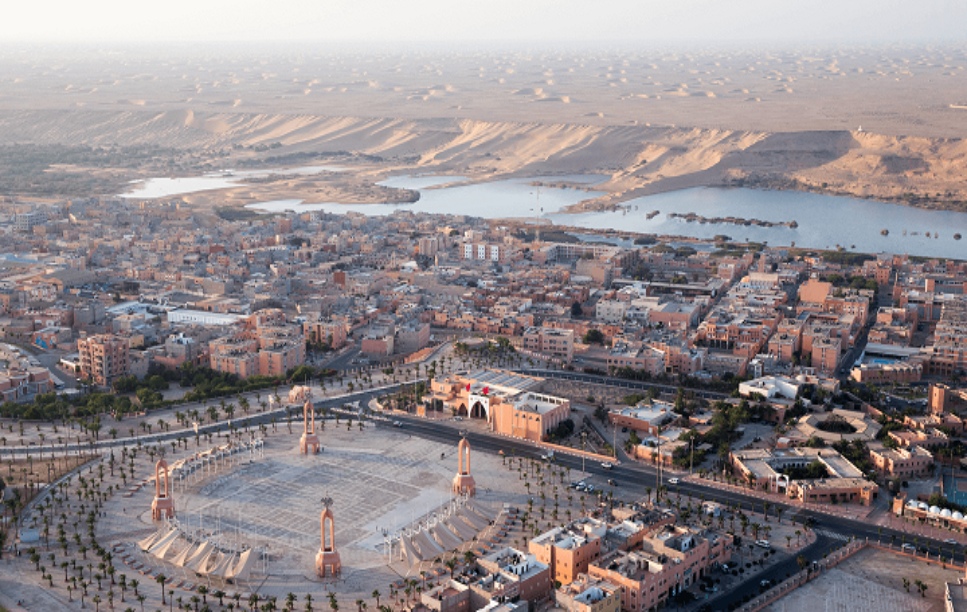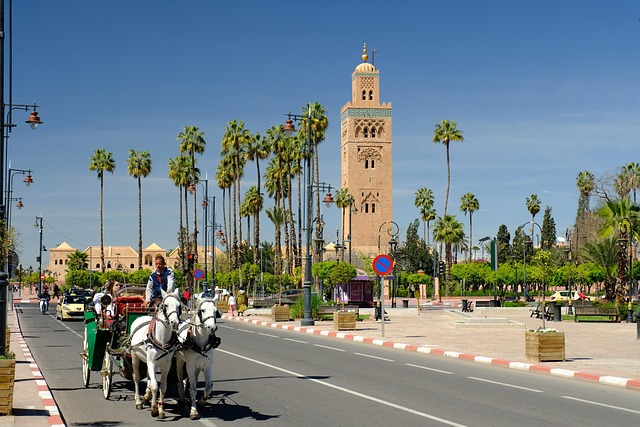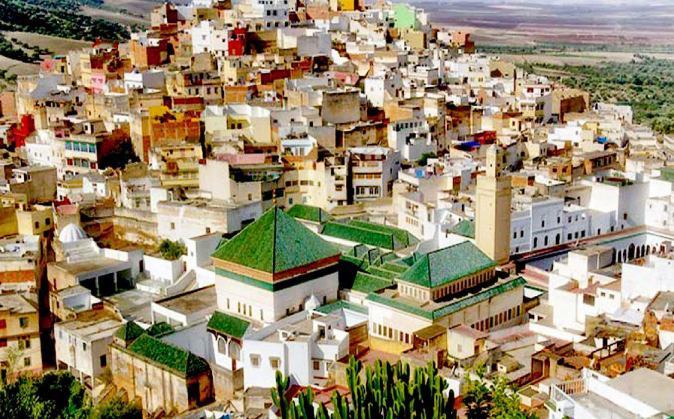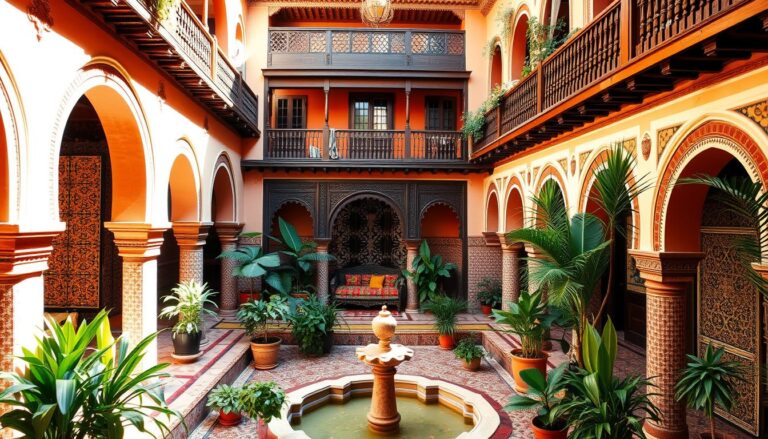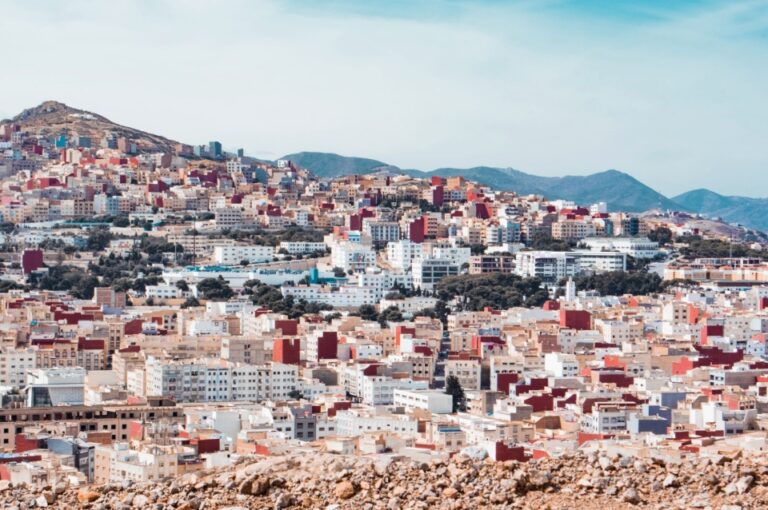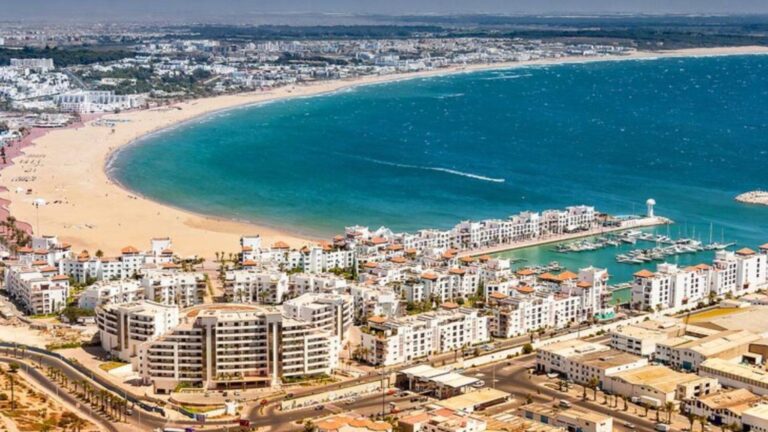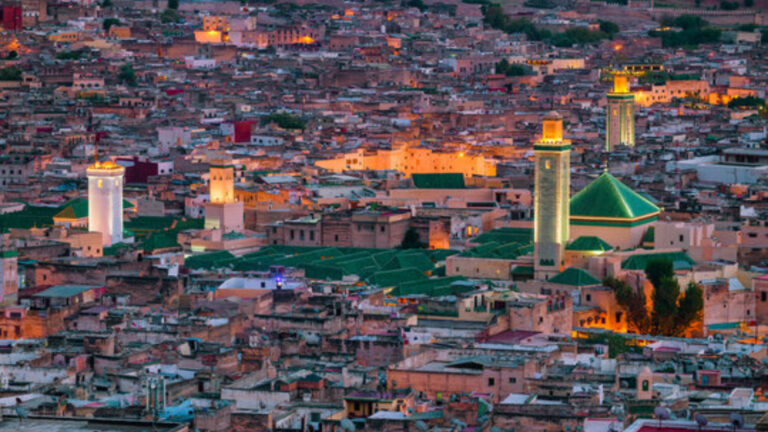Laayoune: The Vibrant Capital of the Moroccan Sahara
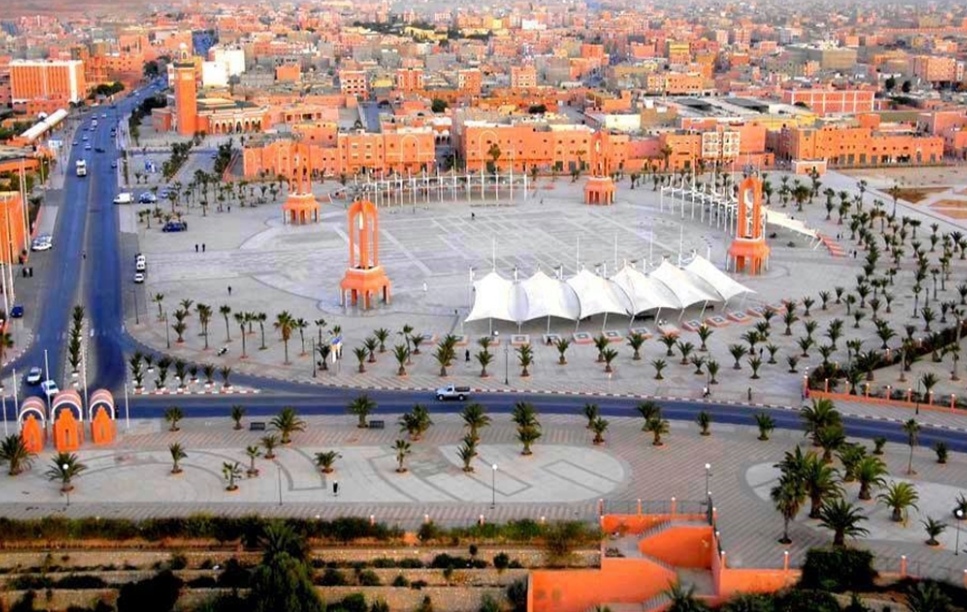
Welcome to Laayoune, Morocco’s gateway to the Sahara and the pulsating heart of the country’s southern provinces, where nomadic traditions thrive alongside modern urban life in perfect harmony.
Rising from the Saharan sands like a mirage made real, Laayoune defies every expectation of what a desert city should be. This dynamic metropolis of over 270,000 inhabitants serves as the economic, cultural, and administrative capital of Morocco’s Saharan region, where Spanish colonial architecture stands alongside traditional Sahrawi tents, and where the rhythm of desert life beats to a distinctly cosmopolitan pulse.
Here, the ancient caravan routes that once carried gold and salt across the Sahara converge with modern highways connecting Africa to Europe. The city offers an extraordinary blend of experiences: from camel treks into infinite sand seas to world-class phosphate mining facilities, from traditional Sahrawi music sessions under starlit skies to contemporary art galleries showcasing desert-inspired creativity.
Whether you’re an adventure seeker drawn to epic desert expeditions, a cultural explorer fascinated by nomadic traditions, or simply someone seeking to witness one of Earth’s most dramatic landscapes, Laayoune promises encounters that will fundamentally change how you view the desert. This isn’t just sand and heat—it’s a living, breathing testament to human adaptability and the eternal beauty of one of nature’s most extreme environments.
From sunrise hot air balloon rides over endless dunes to sunset fishing expeditions along the untamed Atlantic coast, from exploring traditional markets filled with Saharan treasures to experiencing the hospitality of desert nomads, Laayoune invites you to discover a side of Morocco that few travelers ever witness—raw, authentic, and absolutely unforgettable.
The Gateway to Infinite Sahara
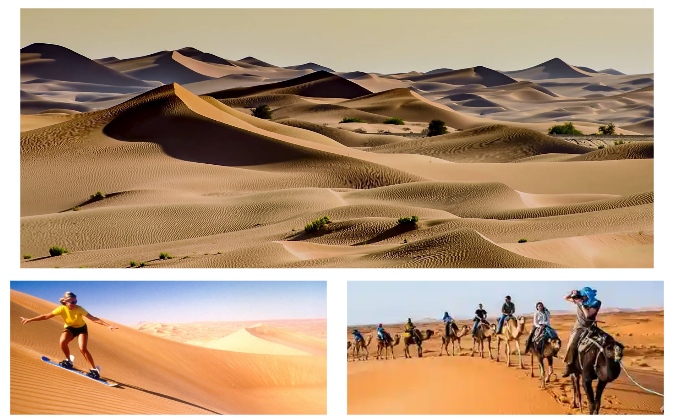
Desert Landscapes Beyond Imagination
Laayoune serves as the perfect launching point for exploring the Moroccan Sahara’s most spectacular landscapes. Just minutes from the city center, visitors encounter the dramatic transition from urban development to pure desert wilderness. The surrounding area features diverse Saharan ecosystems, from vast sand dunes and rocky plateaus to seasonal lakes and oasis valleys that support surprising biodiversity.
Camel Trekking and Desert Adventures
Experience the traditional mode of Saharan travel with guided camel treks that range from short sunset excursions to multi-day expeditions deep into the desert. These journeys offer authentic encounters with nomadic life, overnight camping under some of the world’s clearest night skies, and opportunities to witness desert wildlife including fennec foxes, desert hedgehogs, and various migratory birds.
Sand Boarding and Off-Road Exploration
The massive dunes surrounding Laayoune provide excellent opportunities for sand boarding, a thrilling sport that combines elements of surfing and snowboarding on pristine sand slopes. 4×4 desert safaris offer access to remote areas where ancient rock art, fossilized remains, and geological wonders tell the story of the Sahara’s transformation over millions of years.
Rich Cultural Heritage and Traditions
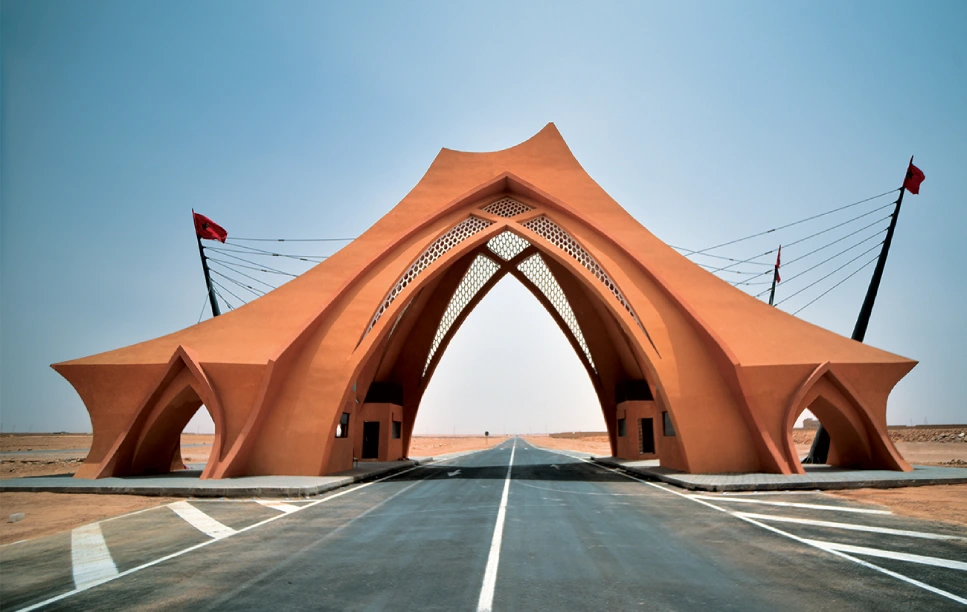
Sahrawi Culture and Nomadic Life
Laayoune serves as a cultural preserve for Sahrawi traditions, the indigenous culture of the Western Sahara. Visitors can experience authentic nomadic lifestyle through visits to traditional camps where families maintain age-old customs of hospitality, storytelling, and desert survival techniques. These encounters provide deep insights into how human communities have thrived in one of Earth’s most challenging environments for millennia.
Traditional Arts and Crafts
The city’s markets showcase distinctive Sahrawi handicrafts including intricately woven textiles, leather goods crafted from camel hide, silver jewelry featuring traditional Berber and Arab motifs, and musical instruments unique to desert culture. Local artisans often demonstrate their techniques, providing visitors with opportunities to understand the cultural significance behind each craft.
Music and Poetry Traditions
Laayoune’s cultural scene celebrates the rich oral traditions of desert peoples through regular performances of Hassani music, characterized by its haunting melodies and rhythmic patterns that echo the desert’s vastness. Traditional poetry sessions, often accompanied by traditional instruments like the tidinit and ardine, offer visitors glimpses into the sophisticated literary culture that flourishes in nomadic communities.
Atlantic Coast and Marine Attractions
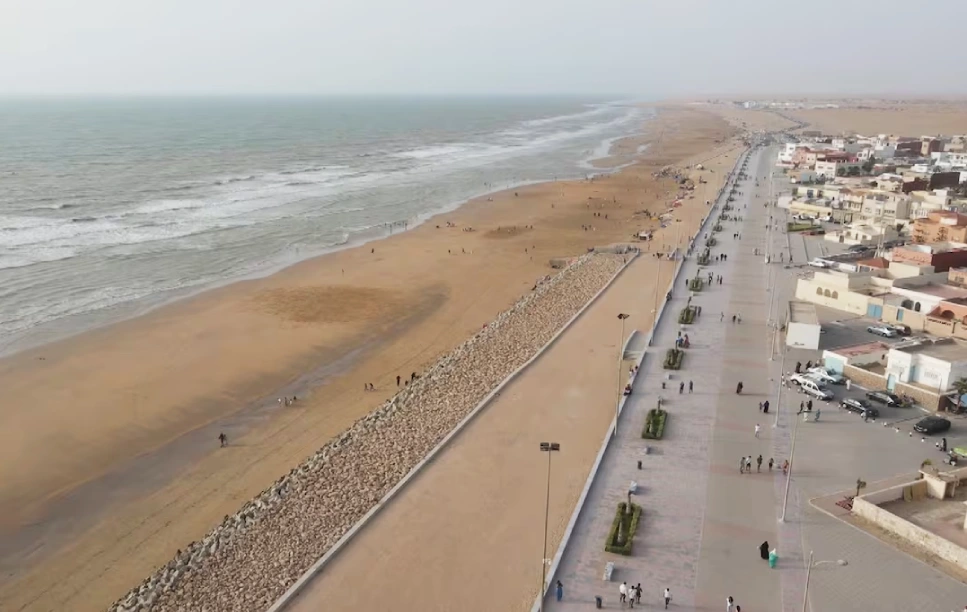
Dramatic Coastline
Despite its desert location, Laayoune offers access to one of Morocco’s most dramatic and unspoiled Atlantic coastlines. The meeting point of Sahara and ocean creates spectacular landscapes where massive sand dunes cascade directly into the sea, forming beaches unlike anywhere else on Earth.
Foum El Oued Beach
Located just 25 kilometers from the city center, this pristine beach stretches for miles along the Atlantic coast. The area is renowned for excellent surfing conditions, with consistent swells and uncrowded waves that attract surfers from around the world. The beach also offers opportunities for kitesurfing, windsurfing, and deep-sea fishing.
Marine Wildlife
The coastal waters near Laayoune support diverse marine life including dolphins, seals, and seasonal whale migrations. The nearby Dakhla Peninsula, accessible as a day trip, is internationally recognized as one of the world’s premier destinations for observing large marine mammals and seabirds.
Modern Development and Economic Significance
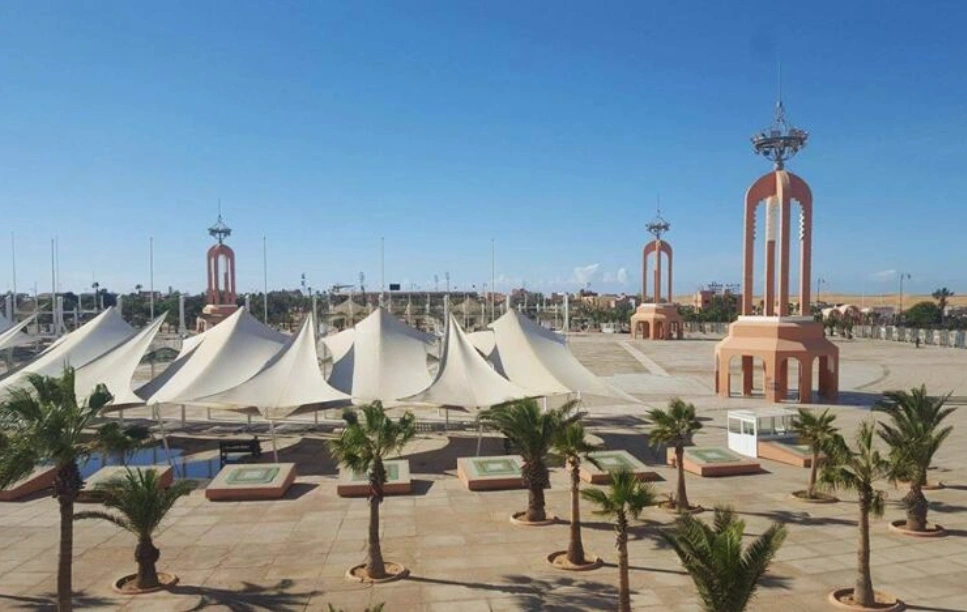
Phosphate Industry and Mining Heritage
Laayoune sits at the heart of one of the world’s largest phosphate reserves, and the city offers unique opportunities to understand this crucial industry through guided tours of mining facilities and processing plants. The phosphate industry has shaped the modern development of the region and continues to drive economic growth.
Urban Planning and Architecture
The city showcases interesting architectural fusion where Spanish colonial buildings reflect the area’s historical connections to Europe, while modern Moroccan architecture incorporates traditional Saharan building techniques adapted for contemporary life. The result is a unique urban landscape that tells the story of cultural convergence and adaptation.
Commercial Hub
As the region’s primary commercial center, Laayoune offers excellent shopping opportunities ranging from traditional desert markets to modern shopping centers. The city serves as a trading post for goods from across West Africa, creating a diverse marketplace where visitors can find everything from traditional crafts to contemporary African fashion.
Natural Wonders and Unique Ecosystems
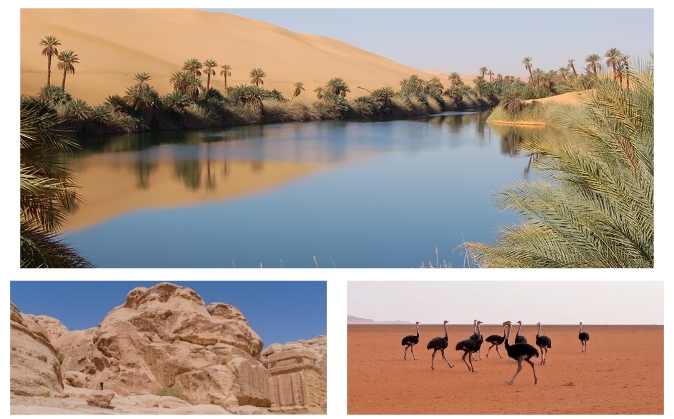
Seasonal Lakes and Oasis Systems
The area around Laayoune features several seasonal lakes and oasis systems that support surprising biodiversity in the desert environment. These wetlands serve as crucial stopover points for migratory birds traveling between Europe and sub-Saharan Africa, creating excellent birdwatching opportunities especially during migration periods.
Desert Flora and Fauna
Contrary to common perceptions, the Saharan environment around Laayoune supports diverse plant and animal life specially adapted to extreme conditions. Guided nature walks reveal desert ecosystems teeming with life, from drought-resistant plants to mammals, reptiles, and insects that have evolved remarkable survival strategies.
Geological Formations
The region features spectacular geological formations including ancient volcanic landscapes, fossilized marine deposits that reveal the area’s prehistoric past as an ocean floor, and unique mineral formations created by millions of years of desert conditions. These sites offer fascinating insights into Earth’s geological history.
Culinary Experiences and Local Flavors
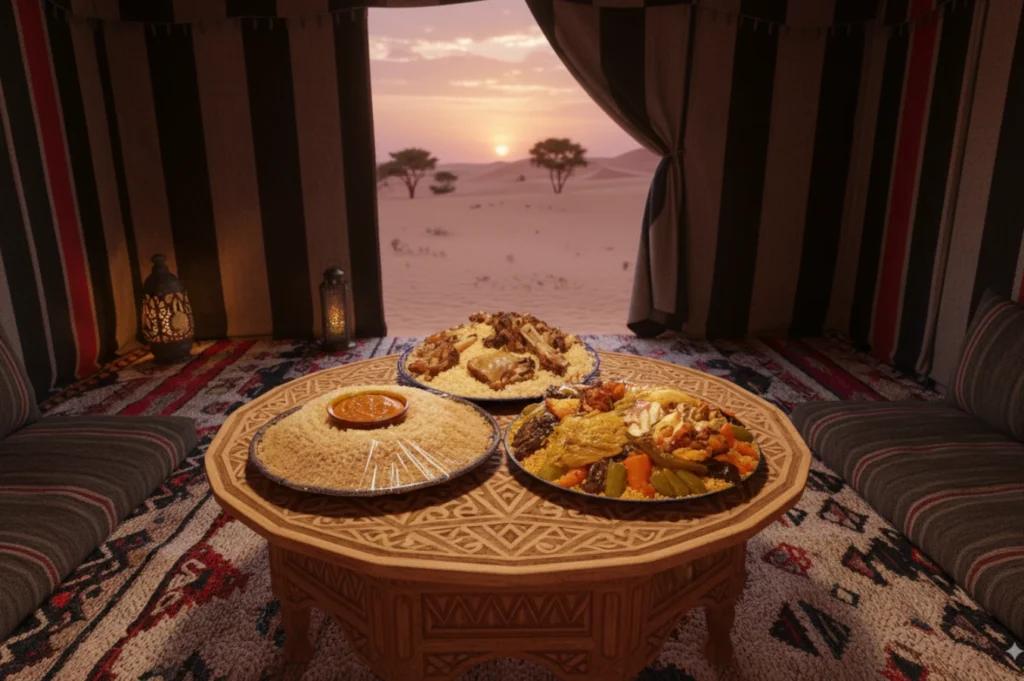
Sahrawi Cuisine
Local restaurants serve authentic Sahrawi dishes that reflect the nomadic heritage and harsh desert environment. Specialties include camel meat preparations, dates and dairy products from desert-adapted livestock, and tea ceremonies that represent the pinnacle of desert hospitality. The cuisine emphasizes preservation techniques and nutritionally dense foods suitable for desert life.
Fresh Seafood
The proximity to the Atlantic provides access to exceptionally fresh seafood, creating a unique culinary fusion where desert spices meet ocean bounty. Local restaurants serve grilled fish, lobster, and other marine delicacies prepared with traditional Saharan seasonings and cooking methods.
Traditional Beverages
Experience the elaborate tea ceremony central to Sahrawi culture, where green tea preparation becomes an art form involving multiple brewings and ceremonial serving rituals. Local markets also offer traditional fermented beverages and fresh camel milk when available.
Practical Travel Information
Getting There
Laayoune Hassan I Airport serves the city with regular flights to major Moroccan cities and some international destinations. The city is also accessible by road, though the journey involves long drives through desert landscapes. Bus services connect Laayoune to other Moroccan cities, and car rental services are available for independent exploration.
Accommodation Options
The city offers various accommodation choices from luxury hotels with desert and ocean views to traditional desert camps that provide authentic nomadic experiences. Many establishments specialize in organizing desert excursions and cultural experiences as part of their service offerings.
Climate and Best Time to Visit
Laayoune enjoys a desert climate with mild winters and hot summers. The best visiting periods are October through April when temperatures are comfortable for outdoor activities and desert exploration. Winter months occasionally bring surprising rainfall that transforms the desert landscape temporarily.
Tips and Recommendations

Desert Survival and Safety
- Always travel with experienced guides when venturing into remote desert areas
- Carry ample water and inform others of travel plans
- Protect against sun exposure with appropriate clothing and sunscreen
- Understand that desert conditions can change rapidly
Cultural Sensitivity
- Respect local customs, especially regarding religious observances
- Ask permission before photographing people
- Learn basic Arabic or French phrases
- Dress modestly, particularly when visiting traditional communities
What to Pack
- Light, breathable clothing for day wear
- Warm layers for cool desert evenings and early mornings
- Sturdy, closed-toe shoes for desert terrain
- Sun hat, sunglasses, and high-SPF sunscreen
- Plenty of water and snacks for desert excursions
Photography and Documentation
- Bring extra batteries and memory cards
- Protect equipment from sand and dust
- Consider sunrise and sunset timing for optimal lighting
- Respect restrictions around military or sensitive areas
Hidden Gems and Local Secrets
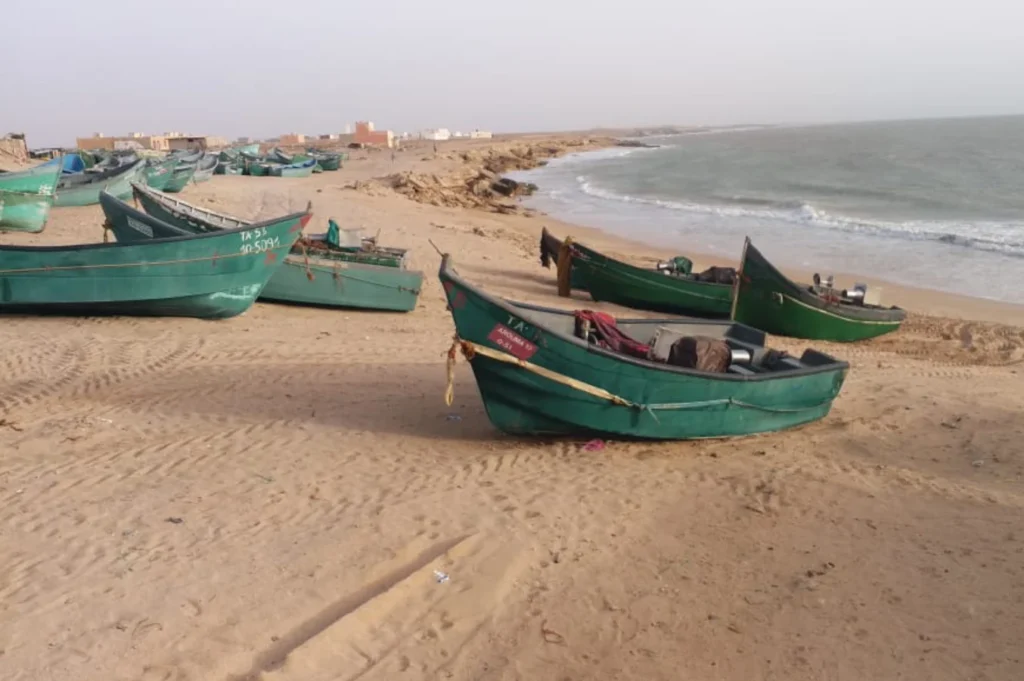
Secret Oases
Local guides can lead visitors to hidden oases known only to nomadic families, where natural springs create lush microclimates in the heart of the desert. These locations offer opportunities for swimming, picnicking, and experiencing desert tranquility away from any crowds.
Traditional Fishing Villages
The coast near Laayoune features traditional fishing villages where communities maintain age-old fishing techniques and boat-building traditions. These settlements offer authentic glimpses into coastal Saharan life and excellent opportunities for cultural photography and interaction.
Astronomical Observation
The clear, unpolluted skies around Laayoune provide some of the world’s best conditions for stargazing and astronomical observation. Local guides familiar with desert navigation can identify constellations and share traditional knowledge about celestial navigation used by nomadic peoples.
Artisan Workshops
Hidden throughout the city are small workshops where traditional craftspeople practice ancient techniques for leather working, textile production, and metalworking. These artisans often welcome visitors and may offer informal demonstrations of their skills.
FAQs
Q1: Is Laayoune safe for international tourists to visit? A: Yes, Laayoune is generally safe for tourists. As the administrative capital of the region, it has good infrastructure and security. The city welcomes international visitors and has developed tourism facilities. However, it’s advisable to check current travel advisories and travel with reputable tour operators, especially when venturing into remote desert areas.
Q2: What’s the best time of year to visit Laayoune for desert activities? A: The optimal period is October through April when daytime temperatures are comfortable (20-25°C) and nights are cool but not cold. Summer months (May-September) can be extremely hot with temperatures exceeding 40°C, making desert activities challenging. Winter occasionally brings rain, which can create spectacular temporary desert blooms.
Q3: How many days should I plan for a Laayoune visit? A: A minimum of 4-5 days allows you to experience the city’s main attractions, take a desert excursion, and visit the coast. A week-long stay permits deeper desert exploration, cultural immersion with local communities, and day trips to surrounding areas. Extended stays allow for multi-day camel treks and comprehensive regional exploration.
Q4: Can I experience authentic Sahrawi culture, and is it appropriate for tourists? A: Absolutely! The Sahrawi people are renowned for their hospitality and often welcome respectful visitors to experience their culture. Many families offer cultural exchanges, traditional meals, and insights into nomadic life. It’s important to approach these encounters with respect, cultural sensitivity, and preferably through organized cultural tours that benefit local communities.
Q5: What unique activities can I only experience in Laayoune compared to other Moroccan destinations? A: Laayoune offers unique experiences like witnessing the dramatic meeting point of Sahara Desert and Atlantic Ocean, participating in authentic nomadic lifestyle with Sahrawi families, exploring phosphate mining operations, surfing on uncrowded Atlantic beaches surrounded by desert, and experiencing some of the world’s clearest night skies for astronomical observation. The combination of desert, ocean, and indigenous culture creates opportunities unavailable elsewhere in Morocco.

